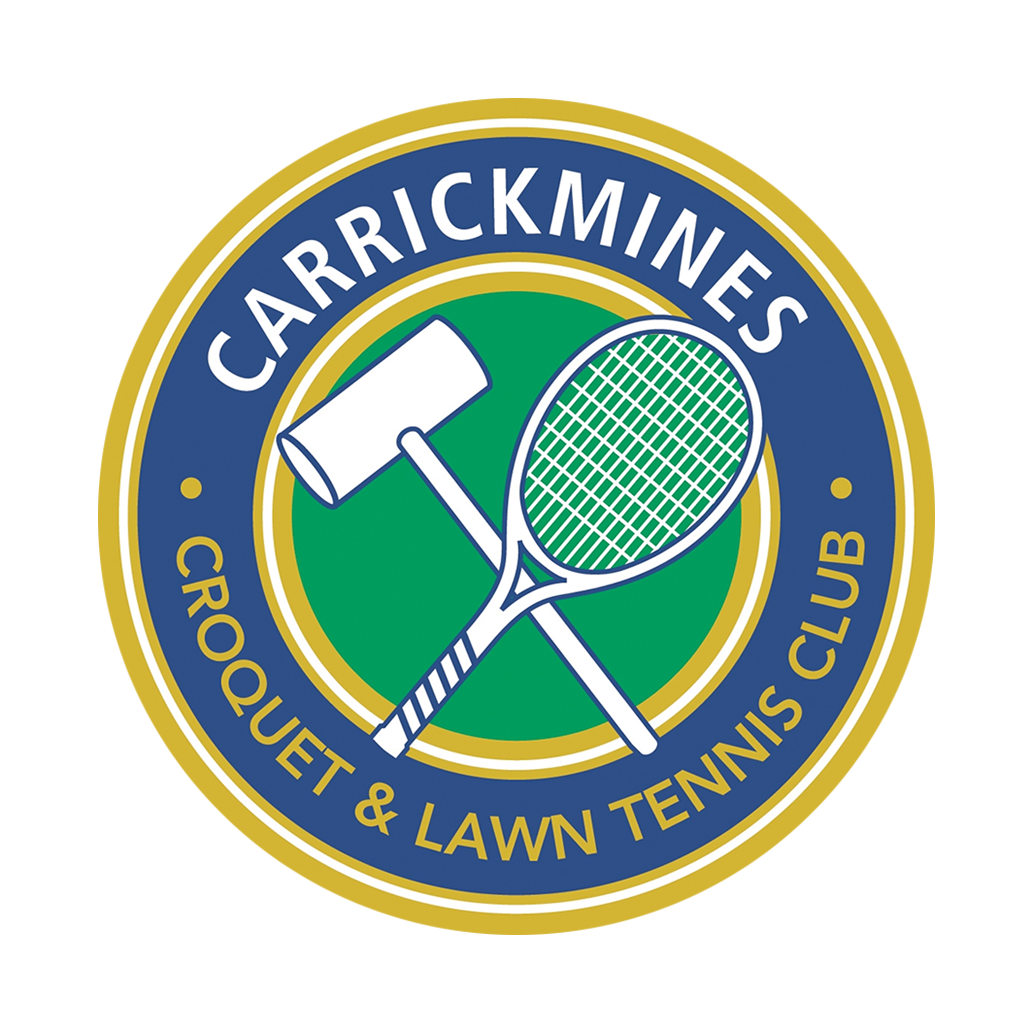“The British Invasion”

With local roads named Westminster Road, Brighton Road and Torquay Road, it is not surprising that there was a strong British influence in Carrickmines in the early days.
When the founder of Carrickmines, William Wilson led out the Irish rugby team against Scotland in 1877, tennis was in its infancy. Later that year the first lawn tennis tournament, “The Championships” was hosted by the All-England Club.

Heather Watson with Imogen Mackey in 2017 at the ITF tournament in Carrickmines.
In Wimbledon in 2015, Heather played against the World No.1 Serena Williams, and was two points away from winning. Following the match Williams, who went on to win the title, applauded Watson’s efforts and went on to say that “she should have won the match”.
Serena has won 23 Grand Slam singles titles, the most by any woman in the professional era, and the second most of all time behind Margaret Court (24).
Heather Watson won the Wimbledon Mixed Doubles in 2016.

Samantha Smith County Dublin Champion in 1994
Samantha Smith was the British Ladies’ No. 1 from 1996 to 1999 and a commentator on the national networks.
She reached the fourth round in Wimbledon in 1998, when she beat former champion Conchita Martínez before losing to eventual runner-up Nathalie Tauziat from France.
In 1995, she was runner-up with Paul Robinson at the World Student Games in Japan. Robinson was the County Dublin Men’s Champion in 1995.
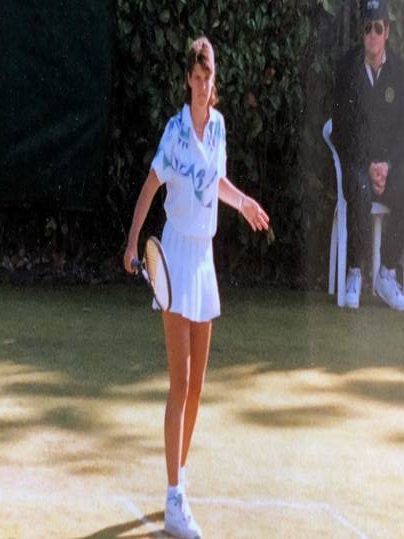
Samantha Smith in action in the final at Carrickmines
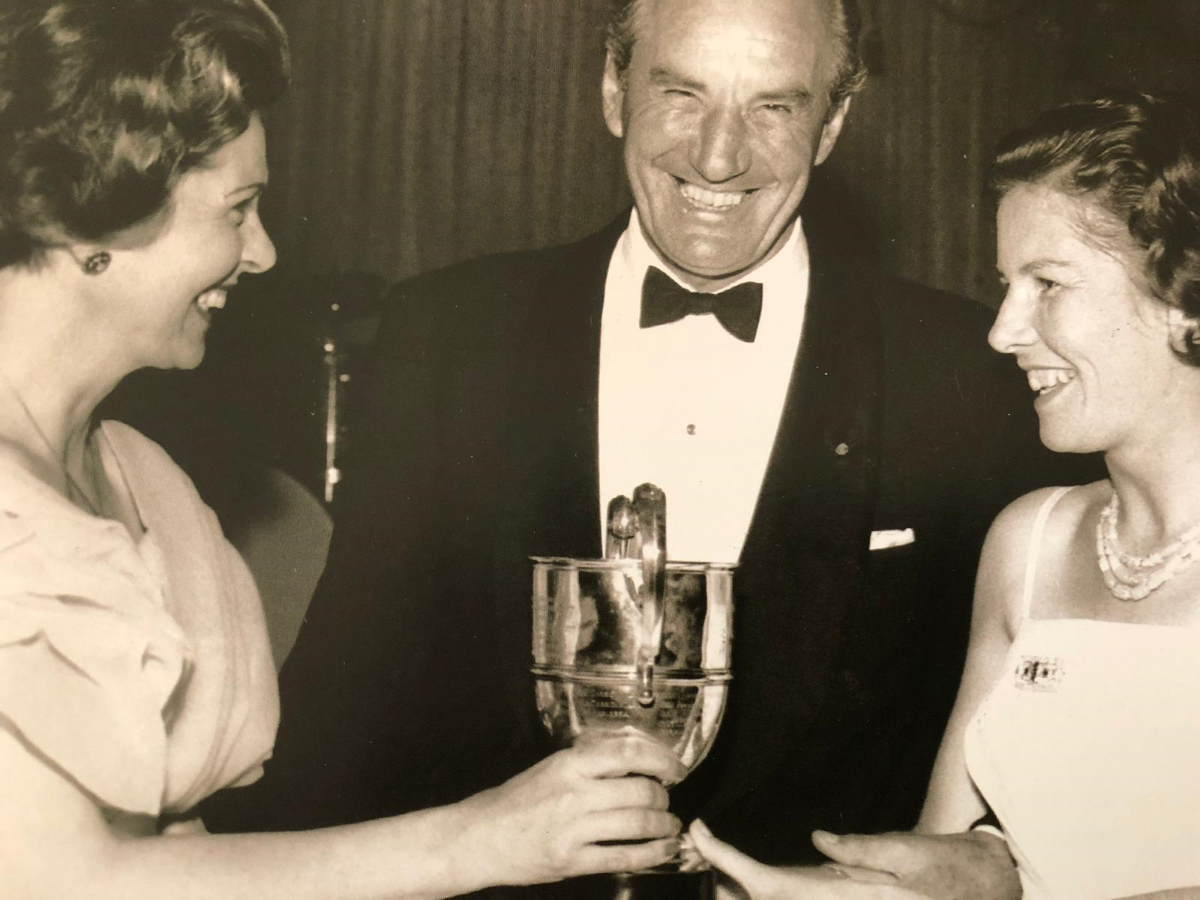
Fred Perry and his wife Barbara presenting the DLTC Class 2 Cup to Carrickmines Captain Sonja Buckley in 1961. Sonja was Carrickmines Club President 1983 to 1984.
Perry was the outstanding player of his day. He won all the Slams including three successive Wimbledons and three French titles and became the first player to win a career Grand Slam.
In 1933, Perry led the Great Britain team to victory over France in the Davis Cup final.
France had won the trophy for the previous six years. It was Britain’s first success since 1912 when Ireland’s James Parke played the leading role for the “British Isles” team.
Due to his disillusionment with the class-conscious nature of the Lawn Tennis Club of Great Britain, the working-class Perry turned professional at the end of the 1936 season and moved to the United States where he became a naturalised US citizen in 1939.
In 1942, he was drafted into the US Army Air Force during the Second World War. The “Fred Perry” clothing brand was named after him.

Mark Cox, the County Dublin Champion in 1960.
Mark Cox went on to be one of the top professionals of his era. He played on the British team that reached the Davis Cup final in 1978, against the United States. He had great wins in Slams against Rod Laver at the 1971 Australian Open (the No 1 seed), and Ken Rosewall at the 1972 US Open (the No. 2 seed). He also defeated Jimmy Connors at the 1970 US Open.
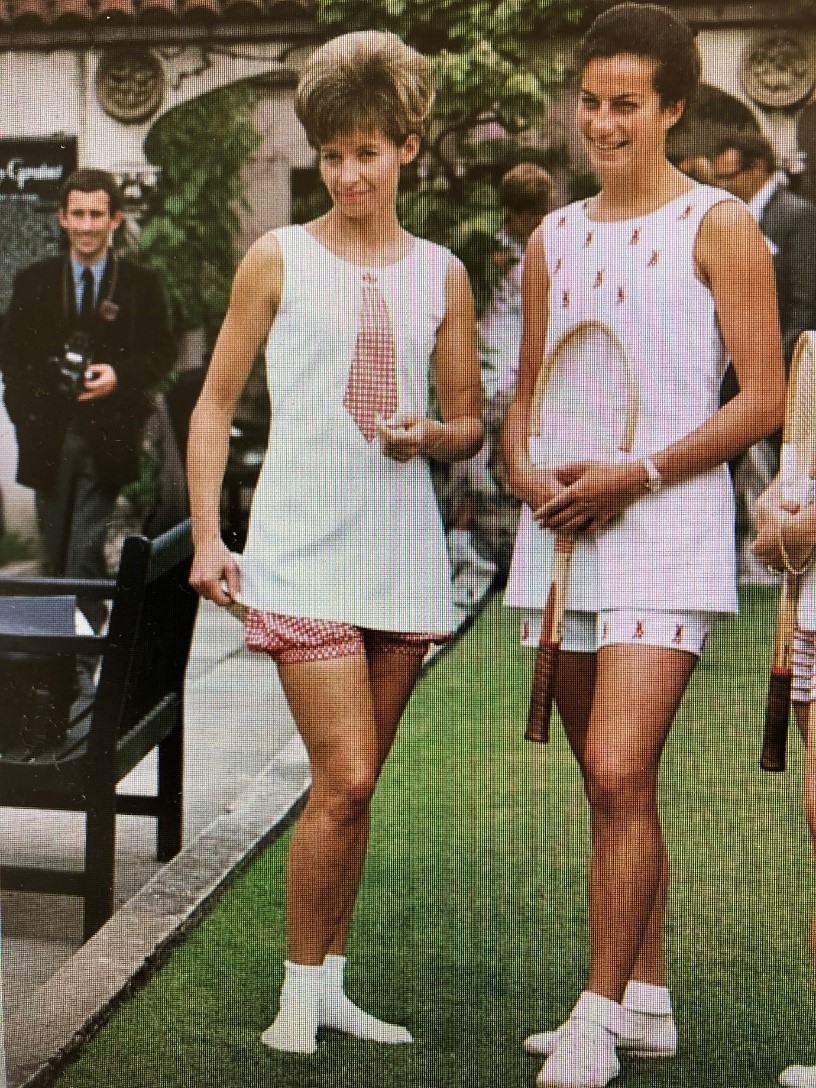 “The swinging 60s” 1967 Tennis Party at Hurlingham. Lorna Cornell on the left and Virgina Wade
“The swinging 60s” 1967 Tennis Party at Hurlingham. Lorna Cornell on the left and Virgina Wade
Lorna Cornell won Junior Wimbledon in 1950 & 1951. In 1951, she beat June Ann Byrne (Fitzpatrick), 9/7 4/6 7/5 in the first round. That was to be her tightest match in either tournament.
Lorna lost in the 1955 County Dublin Championships final to Betty Lombard from Lansdowne.
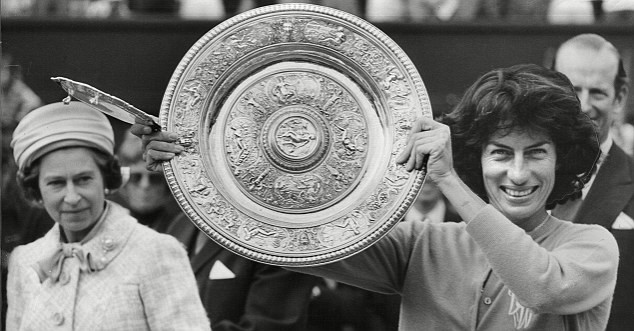
Virginia Wade won the Centenary Wimbledon Championships in 1977.
Virginia Wade was the last British Lady Grand Slam Champion until Emma Raducanu won the U.S Open title in 2021. All the more remarkable in so far as Raducanu became the first qualifier ever to win a Grand Slam!
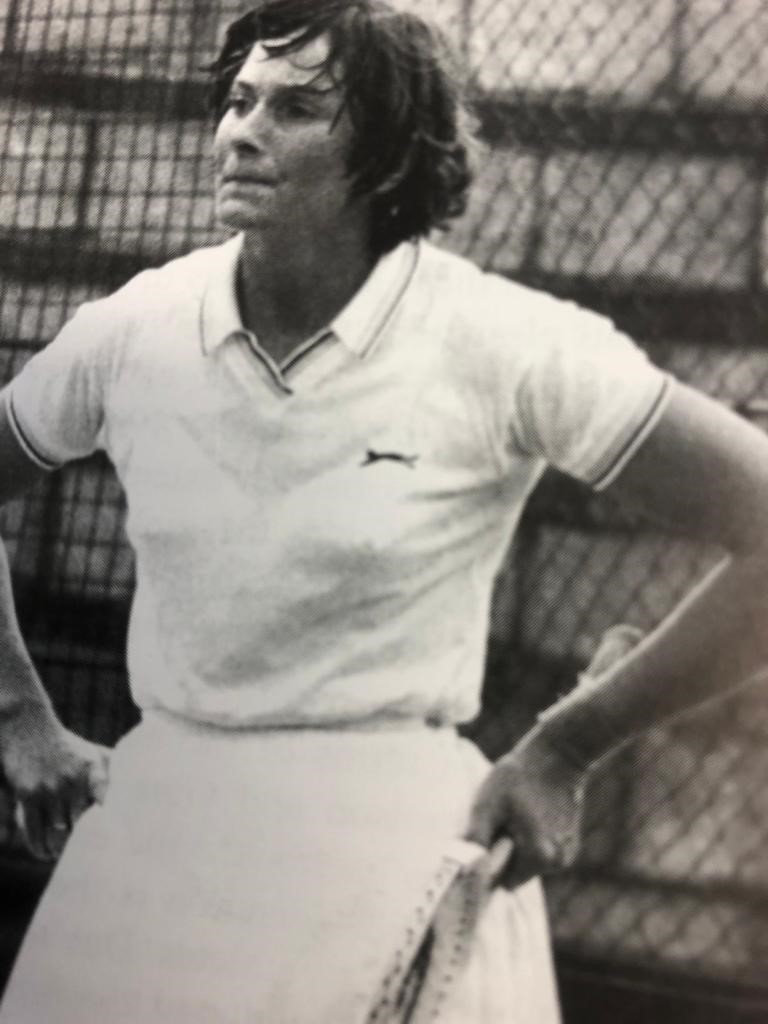
Graldine Barniville (Holohan)
Geraldine Barniville defeated Wade in an England v Ireland international match in Scarborough in the late 60s.
Both Geraldine and June Ann are life members of Carrickmines and played in many league successes for the club.
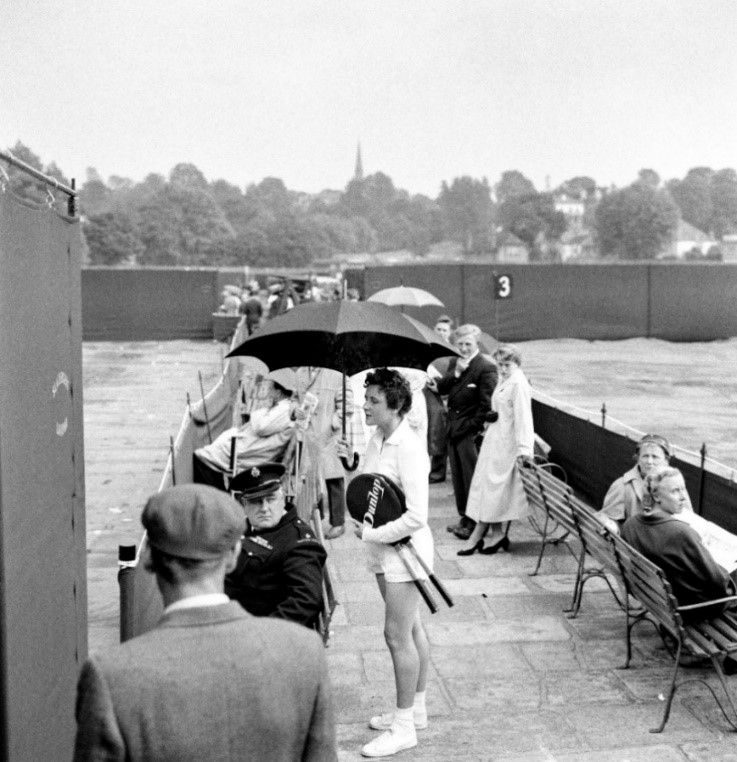
June Ann checking out the grass after a rain break at Wimbledon

John Horn & Lorna Cornell Junior Boys & Girls Wimbledon Champions 1950
John Horn, shortly after his Junior Wimbledon triumph, turned Pro. He came to Dublin in 1957 on a coach exchange program between the LTA and the ILTA (now Tennis Ireland).
John moved to Dublin permanently and became the National Coach. In tandem with his successful coaching career, John and his wife Angela, organised and refereed the Leinster Junior and the Irish Veteran Championships at Lansdowne LTC.
Their son Peter, is also a fine coach and player, has been an active member of Carrickmines for many years.
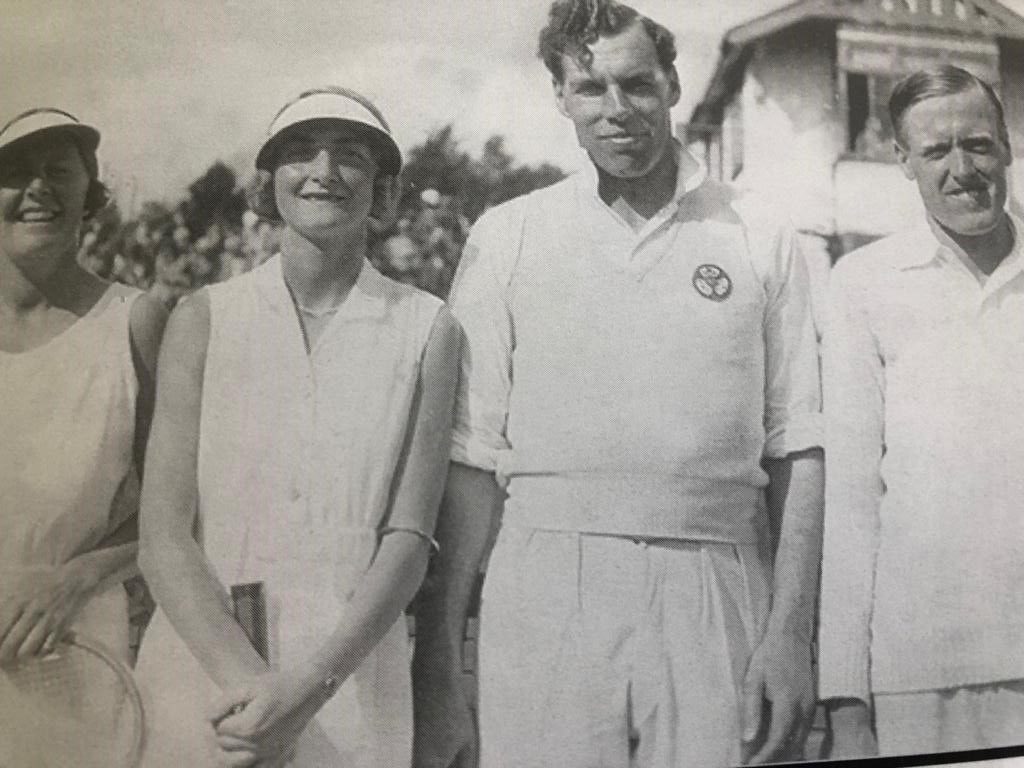
Hilda Wallis, Vera Mahony, Colin Gregory and Trevor McVeigh
Colin Gregory was a two-time Champion in Carrickmines, in 1930 & 1933. He won the Australian Championships in 1929 and reached the final of the Men’s Doubles at Wimbledon also that year. Following the Second World War, Gregory was captain of the British Davis Cup team. He became Chairman of the All-England Club in 1955. He died in 1959 in the changing rooms following a match.
Some of the best travelled from England in the early days and played in both the Irish Championships at Fitzwilliam and the County Dublin Championships in Carrickmines which were played back-to-back. Perhaps there were no better British ladies than Kathleen McKane (“Kitty Godfrey”). In 1924 she won in Carrickmines having won at Wimbledon earlier in the year.
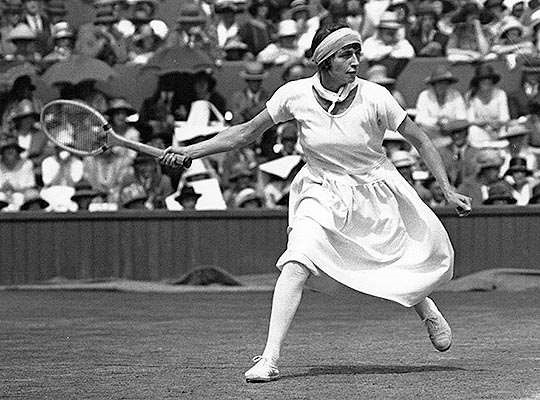
Kathleen McKane Godfrey won at Wimbledon and Carrickmines in 1924.
Kitty Godfrey won two Wimbledon Singles and two US Doubles titles winning seven Grand Slam titles in all. She also won five Olympic medals for tennis including Gold, Silver and Bronze.
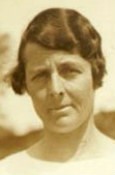
Geraldine Beamish World Covered Court Champion 1920
Beamish surprisingly defeated Kitty Godfrey in the final of the World Covered Court Championships in 1920. Later that year she lost the Carrickmines final to Elizabeth Ryan. The following year she was finalist in the Wimbledon Doubles.
Her husband, Alfred Beamish lost the 1912 Australian Championships final to Ireland’s James Parke.
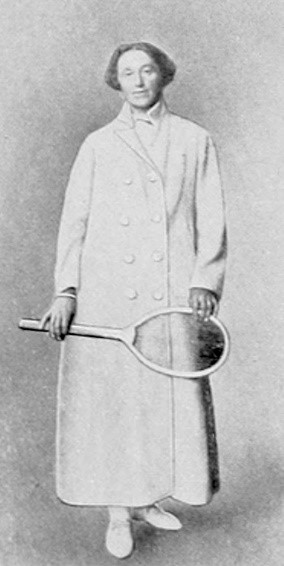
Edith Boucher
Edith Boucher was the first Ladies County Dublin Champion in 1908 when the tournament recommenced in Carrickmines after a fourteen-year break.
She was also Gold Medallist in Singles & Mixed (Indoor events) at the Stockholm Olympics. In 1911 Boucher reached the All-Comers final at Wimbledon and in 1914 she was finalist in the Ladies Doubles.
The Trailblazers | The British Invasion | The French Connection | The Swedish Conquest | Born in the USA | Out of Africa | CzechMate | Aussie Rules | Ireland’s Call
